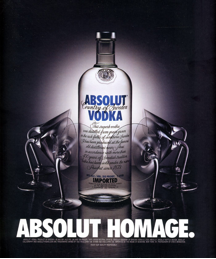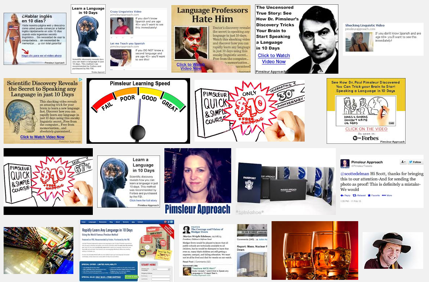You may place Facebook ads to your Website hoping to drive traffic, but let’s face it, you’re probably not really interested in traffic — you’re probably interested in sales!
And that means traffic for traffic’s sake can be an expensive mistake.
People who come to your site as sight-seers aren’t what you’re after. You’re after people really looking to buy. In other words, qualified traffic.
And that’s what I truly loved about the following Facebook Ad:
Sure, it’s an eye-catching ad. Lots of people are going to see the brain images and read the copy. And that’s great exposure. But the copy itself ensures that only qualified traffic clicks through to the video.
If you’re not interested in learning Spanish, you just won’t click. If you are interested in learning Spanish, you’ll probably want to watch the video.
Also, another brilliant thing this ad does is inform the potential customer what to expect if they do click through — they can expect a video, and don’t worry it’s a short video, so it won’t take up too much of your time. Brilliant.
Most ads don’t pre-qualify their traffic very well, and very few Facebook ads inform readers what to expect post-click. You never know if the ad will take you to their Facebook Fan page, or to an outside landing page, or what.
For example: I like this ad a lot, but I’m not sure what to expect after I click. Turns out, it’s like a dollar-shave club thingy where you buy the razor handle and sign up for delivery of razor blades.
Now maybe just getting lots of people to understand the offer is worth it to Harry’s — they’ll pay for the clicks of guys like me who think the razors are cool, but who just don’t need anymore auto-billed monthly payments.
If they wanted more qualified, and likely better converting traffic, Harry’s would simply need to extend their ad copy to say something like: “For $15 a month, you’ll enjoy the best shave of your life, every day — never run out of blades or shaving cream again.”
Sure, fewer people might click through, but the ones who do will be looking to sign-up. And that’s what you’re after if you’re paying on a per-click basis.
But what about on flat-fee or CPM basis? Then Harry’s strategy starts looking a bit smarter doesn’t it? You’re already paying for the ad to show up in a newsfeed, whether it’s actually noticed or not, and whether the readers click on it or not. So why not have as many click-throughs as possible?
And that, my friends is the line where you start to cross over from direct response to branding. When exposure and impressions are more important than measurable actions, and you start thinking in terms of frequency and reach, you’re now in the land of traditional mass media advertising.
And why not?
Why not think of Facebook as the most outrageously popular magazine on the face of the earth. And you’re just paying to put a full-page ad into that magazine.
It worked pretty well for Absolute Vodka, whose iconic magazine ads led to a 14,900 percent increase in sales. From 1981 until 2009, the campaign ran non-stop and took Absolut from sales of 20,000 cases to 11.8 million cases.
And no one ever “clicked” on one of those magazine ads.
The problem with this strategy, back in the magazine day, was that getting into the big national periodicals took tons of cash. Very few companies could afford it. Sure, you could go with a trade periodical, but it doesn’t quite pack as big of a punch.
Now here’s the cool part of this when it comes to Facebook: you can target trades and still be seen in the “cool” magazine. And you can do it on a very affordable basis. All you need is some real graphic talent and a sound advertising strategy.
And that brings us back to the Pimsleur Approach ad. Because the founder of that company, Dan Roitman, understands this approach incredibly well. He founded his company on the back of effective direct response and online advertising. And he knows that both types of ads have their place.
Why?
Because even though you might not be in the market to learn Spanish today, you might well fall into that market sometime in the next 5 years. And when evaluating programs, which one will you think of first and feel the best about: the program you’ve seen advertised for years, or some program you’ve never heard of?
All Dan Roitman has to do is craft online ads that creatively grab your attention and claim some “top of mind awareness” from you when you think about high-speed “language courses” — which, from the looks of it, he’s done in spades.
So while some may see Page Posts as the beginning of the end for Facebook (or the Facebook user experience), I see it as the beginning of a renaissance of print advertising gone digital. And so should you.








